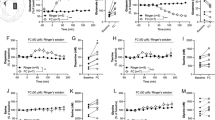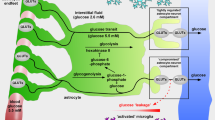Abstract
THE hypothesis that a functional excess of dopamine underlies many of the abnormalities seen in schizophrenia is receiving much attention. The supporting evidence is principally pharmacological. There is a correlation between antipsychotic drug action and the ability of a neuroleptic drug to block dopaminergic transmission1–3. The exact site of antipsychotic drug activity is not known and evidence for the presynaptic inhibition of dopamine release4, as well as the blockade of postsynaptic receptors5,6 has been presented to explain neuroleptic drug action. Studies of binding properties of the dopamine receptor, however, provide a coherent explanation of neuroleptic drug action. Butyrophenones, phenothiazines, thioxanines and diphenyl-butylpiperadines inhibit 3H-haloperidol binding to a central nervous system (CNS) membrane fraction in exactly the order of their clinical potency7–10: the inhibition occurs at drug concentrations similar to those expected in the CNS of patients taking these drugs. These results with 3H-haloperidol, a dopamine antagonist, are used to argue that neuroleptics bind to postsynaptic dopamine receptors, and are effective by decreasing the activity of pathways using dopamine as their neurotransmitter. On the other hand, dopamine-sensitive adenylate cyclase is associated with the postsynaptic receptors5,11, yet the inhibition of this enzyme by neuroleptic butyrophenones does not correlate with in vivo or clinical potency. The difference between butyrophenone inhibition of 3H-haloperidol binding and inhibition of adenylate cyclase has been attributed to “variable degrees of coupling of dopamine receptor sites with the adenylate cyclase”9. Alternatively, there could be several dopamine sensitive adenylate cyclases with differing binding affinities and localisations : this is suggested by the presence of this enzyme in several tissue culture lines of glia12. Lesion studies show that the enzyme is not localised presynaptically in the caudate nucleus13 or in the substantia nigra14. The only defined dopaminergic receptors in the substantia nigra are localised on dopaminergic neurones15, and the elimination of these cells as the site of the enzyme was established by unilateral injections of 6-hydroxydopamine which removed these cells14. It therefore seems necessary to define more exactly the site of the dopamine binding receptor and the dopamine-stimulated adenylate cyclase. We report here that a large proportion of CNS dopamine haloperidol binding sites seem to be present on glial membranes and may be associated with an adenylate cyclase localised on these membranes.
This is a preview of subscription content, access via your institution
Access options
Subscribe to this journal
Receive 51 print issues and online access
$199.00 per year
only $3.90 per issue
Buy this article
- Purchase on Springer Link
- Instant access to full article PDF
Prices may be subject to local taxes which are calculated during checkout
Similar content being viewed by others
References
Van Rossen, J. M. Archs int. Pharmacodyn. Thér 160, 492–494 (1966).
Matthysse, S. Fedn Proc. 32, 200–204 (1973).
Synder, S. H., Banerjee, S. P., Yamamura, H. I. & Greenberg, D. Science 184, 1243 (1974).
Seeman, P. & Lee, T. Science 188, 1217–1219 (1975).
Kebabian, J. W., Petzold, G. L. & Greengard, P. Proc. natn. Acad. Sci U.S.A. 69 2145–2149 (1972).
Burt, D. R., Enna, S. J., Creese, I. & Synder, S. H. Proc. natn. Acad. Sci. U.S.A. 72 4655–4659 (1975).
Creese, I., Burt, D. R. & Synder, S. H. Life Sci. 17, 993–1002 (1975).
Seeman, P., Chau-Wong, M., Tedesco, J. & Wong, K. Proc. natn. Acad. Sci. U.S.A. 72, 4376–4380 (1975).
Creese, I., Burt, D. R. & Synder, S. H. Science 192, 481–483 (1976).
Seeman, P., Lee, T., Chau-Wong, M. & Wong, K. Nature 261, 717–718 (1976).
Iversen, L. K. Science 188, 1084–1088 (1975).
Schubert, D., Tarikas, H. & La Corbiere, M. Science 192, 471–472 (1976).
Misha, R. K. Gardner, E. L., Katzman, R. & Makman, H. Proc. natn. Acad. Sci. U.S.A 71, 3883–3887 (1974).
Kebabian, J. W. & Saavedra, J. M. Science 193, 683–685 (1976).
Aghajanian, G. K. & Bunney, B. S. in Frontiers in Catecholamine Research (eds Usdin' E & Synder, S.) 643 (Pergamon, New York, 1973).
Gray, E. G. & Whittaker, V. P. J. Anat. 96, 79–89 (1962).
Henn, F. A. & Hamberger, A. Neurochem. Res. 1, 261–273 (1976).
Henn, F. A., Anderson, D. J. & Rustad, D. G. Brain Res. 101, 341–344 (1976).
Fahn, S. in GABA in Nervous System Function (eds Roberts, E., Chase, T. & Tower, D) 172 (Raven, New York, 1976).
Wood, J. G., McLaughlin, B. & Vaughn, J. E. in GABA in Nervous system Function (eds Roberts, E., Chase, T. & Towers, D.) 143 (Raven, New York, 1976).
Roberts, E. & Simonsen, D. G. Biochem. Pharmac. 12, 113–134 (1963).
Pfeiffer, S. E., Herschman, H. R., Lightbody, J. & Sato, G. J. Cell Physiol. 75, 329–340 (1970).
Gilman, A. G. Proc. natn. Acad. Sci. U.S.A. 67, 305–312 (1970).
Bunge, R. P. in The Neurosciences Second Study Program (ed. Schmitt, O.) 782 (Rockefeller, New York, 1970).
Mayer, S. E. & Stull, J. T. Ann N.Y. Acad. Sci. 185, 433–443 (1971).
Andersson, R., Lundholm, L., Mohne-Lundholm, E. & Nilsson, K. in Adv. Cyclic Nucleotide Res. (eds Greengard, P. & Robison, G. A.) 213–229 (Raven, New York, 1972).
Author information
Authors and Affiliations
Rights and permissions
About this article
Cite this article
HENN, F., ANDERSON, D. & SELLSTRÖM, Å. Possible relationship between glial cells, dopamine and the effects of antipsychotic drugs. Nature 266, 637–638 (1977). https://doi.org/10.1038/266637a0
Received:
Accepted:
Issue Date:
DOI: https://doi.org/10.1038/266637a0
This article is cited by
-
Effects of atypical (risperidone) and typical (haloperidol) antipsychotic agents on astroglial functions
European Archives of Psychiatry and Clinical Neuroscience (2010)
-
Prenatal haloperidol alters the expression of DNA polymerases in brain regions of neonate rats
Cellular and Molecular Neurobiology (1990)
-
Is there a ?dopaminergic glial cell??
Neurochemical Research (1984)
-
Cellular composition of a cerebral hemisphere primary culture
Neurochemical Research (1984)
-
Some properties of a “crude” fraction of astrocytes prepared with trypsin
Neurochemical Research (1982)
Comments
By submitting a comment you agree to abide by our Terms and Community Guidelines. If you find something abusive or that does not comply with our terms or guidelines please flag it as inappropriate.



